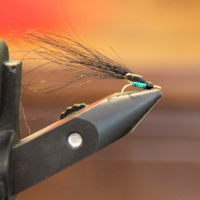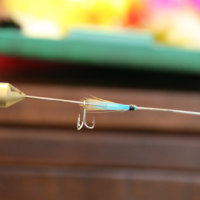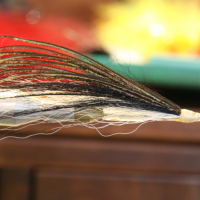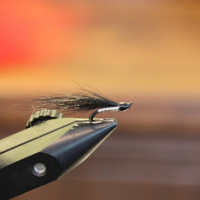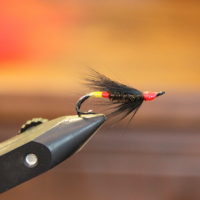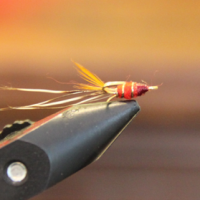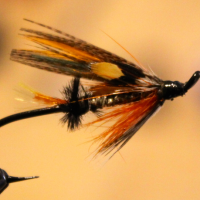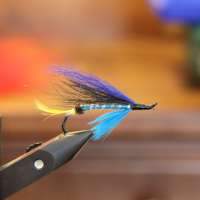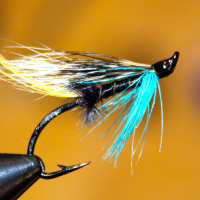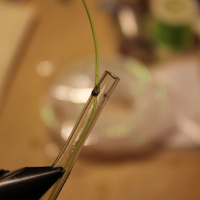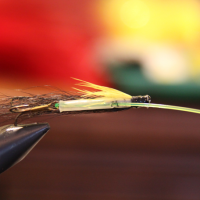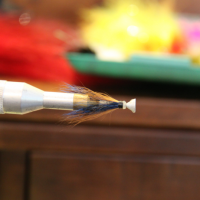
Classical salmon flies were/are tied from feathers, and they tend to be exquisitely beautiful. These flies were dominant in the salmon world for a long while. They are still used, and they certainly catch fish. Tying them is not easy, and some feathers are hard to find. Jungle Cock used in the so-called “cheeks” was extensively used, but cannot be used any more here in the States.
Then tiers started to use all kinds of hair in the construction of the flies, and the composition was simplified, and lo and behold, they worked fine, and sometimes even better than the classical ones. This type of fly is much easier to tie. We can also mix feathers and hair to good effect. The salmon is the judge and jury in deciding what works and whatnot. Next synthetic material was added that glitters and moves in ways totally irresistible to the fish, or so went the reasoning.
- Green Brabham
- Microtube
- Sun Ray Shadow
- Collie Dog 1.5”
- Undertaker
- Red Francis #16
- Dusty Miller low water variant
- Laxá Blá
- Blue Charm
- Hairy Mary
The next step was tube flies. They can be made with feathers and/or hair, and pretty much anything you can think of. The tube itself can be plastic – aluminum – brass, etc. When fishing cold rivers in the spring, we can for instance use heavy brass tubes to get the fly down into the water column. Late summer with low warm water, a good bet is to use a micro-tube with a hook (single – double – treble) #16. Hitch tubes are also effective, and the takes spectacular in the surface. The leader is threaded through a side hole in the tube and out through the end where the hook is tied. The tube will ride a bit sideways in the current and will skate over leaving a “V” in the surface as it travels from the opposite bank to our side.
- A hitch tube – the leader is threaded into the tube sideways
- Microtube
- Sun Ray Shadow
- Hitch tube
- Hairy Mary tube
What the next invention will be I do not know but fertile minds will undoubtedly come up with something interesting.

